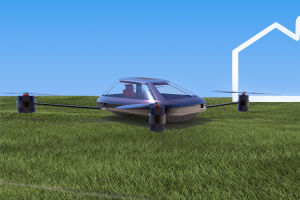Unmanned Aerial Vehicles (UAVs), commonly known as drones, have rapidly become an essential part of our world. They are flying machines that operate without a human pilot onboard.
Over the years, drones have shifted from being primarily defense tools to valuable assets in various industries. Whether we’re using them for recreational purposes, commercial use, or in scientific research, drones are transforming how we approach different tasks.
Introducing: SV360 Skyeye UAV 55kg unmanned aerial vehicles
video by UAVMODEL
In this article, we’ll explore how UAVs work, their various applications, and how they’ve evolved into indispensable devices across many sectors. Let's dive into the world of UAVs and discover why they’re so important!
What is a UAV?
A UAV is essentially an aircraft without a human pilot on board. These devices are controlled remotely, either through manual operations or via automation. The technology used in UAVs includes sophisticated sensors and cameras, which allow them to collect valuable data during their flights. UAVs are classified based on their function and size, and they come in a variety of forms.
Most UAVs are categorized into defense and civilian models. Defense UAVs often have advanced capabilities, including reconnaissance, surveillance, and even combat operations. On the other hand, civilian UAVs are used in industries such as agriculture, construction, and even entertainment.
How UAVs Operate
UAVs operate using a combination of remote control, autonomous flight modes, and sometimes GPS navigation. The most basic drones are manually controlled using a remote, while more advanced models can fly autonomously, following pre-programmed flight paths.
To fly, drones use sensors, GPS, and sometimes a combination of cameras and radar systems. These features enable UAVs to avoid obstacles, stay on course, and even return to a designated home point when necessary. The development of these systems has made UAVs highly reliable and increasingly efficient.
Applications of UAVs
UAVs have a wide range of applications that extend well beyond recreational flying. Let’s explore some of the most popular uses for UAVs in today’s world:
1. Aerial Photography and Videography: UAVs equipped with high-definition cameras are widely used in capturing stunning aerial footage for films, advertisements, and real estate marketing. They offer unique perspectives that traditional equipment like helicopters cannot.
2. Agriculture: Drones are used in farming to monitor crops, assess soil health, and even apply fertilizers or pesticides. With the ability to cover large areas quickly, UAVs have become indispensable tools in modern farming.
3. Search and Rescue: UAVs are crucial in search and rescue missions, especially in hard-to-reach areas like mountains or disaster zones. They can locate missing persons, survey areas for hazards, and deliver necessary supplies quickly.
4. Construction and Infrastructure: UAVs are used to survey construction sites, monitor progress, and inspect structures like bridges and towers. They provide real-time data, improving project management and safety.
5. Defense Use: In the defense sector, UAVs are used for surveillance, intelligence gathering, and tactical operations. Their ability to fly without a human pilot reduces the risks involved in dangerous missions.
The Growing UAV Market
In recent years, the global UAV market has exploded, with drones being adopted across industries. This rapid growth can be attributed to advancements in technology, which have made drones more affordable, reliable, and easier to use. Today, drones are used by governments, businesses, and individuals, contributing to a wide range of services and solutions.
As the market expands, we can expect even more innovative applications of UAVs, especially in fields like environmental monitoring, delivery services, and disaster management. With the ongoing development of autonomous technology, UAVs will continue to evolve, making them even more versatile.
Challenges and Future of UAVs
While UAVs offer numerous benefits, there are also challenges that need to be addressed. One major concern is airspace management, as more drones take to the skies. Governments around the world are implementing regulations to ensure safe drone operations, particularly in busy areas like cities.
Another challenge is the limited battery life of drones, which restricts their operational time. However, technological advancements are being made to increase battery efficiency, making drones more capable for extended use.
Looking ahead, the future of UAVs is incredibly exciting. We can expect to see drones being used in even more innovative ways, revolutionizing industries, and improving lives in ways we may not even have imagined yet.
Final Thoughts on the Future of UAVs
UAVs are not just a passing trend—they’re a transformative technology that’s here to stay. From their defense origins to their widespread use in civilian applications, drones are making a significant impact across various sectors. As technology continues to improve, drones will only become more powerful, efficient, and versatile.
We hope this article has given you a better understanding of UAVs and their potential. If you’re curious about drones or considering using them for a particular application, now is the perfect time to explore this exciting technology! If you have any thoughts or questions, feel free to share them with us. Stay tuned for more insights on cutting-edge technologies!


